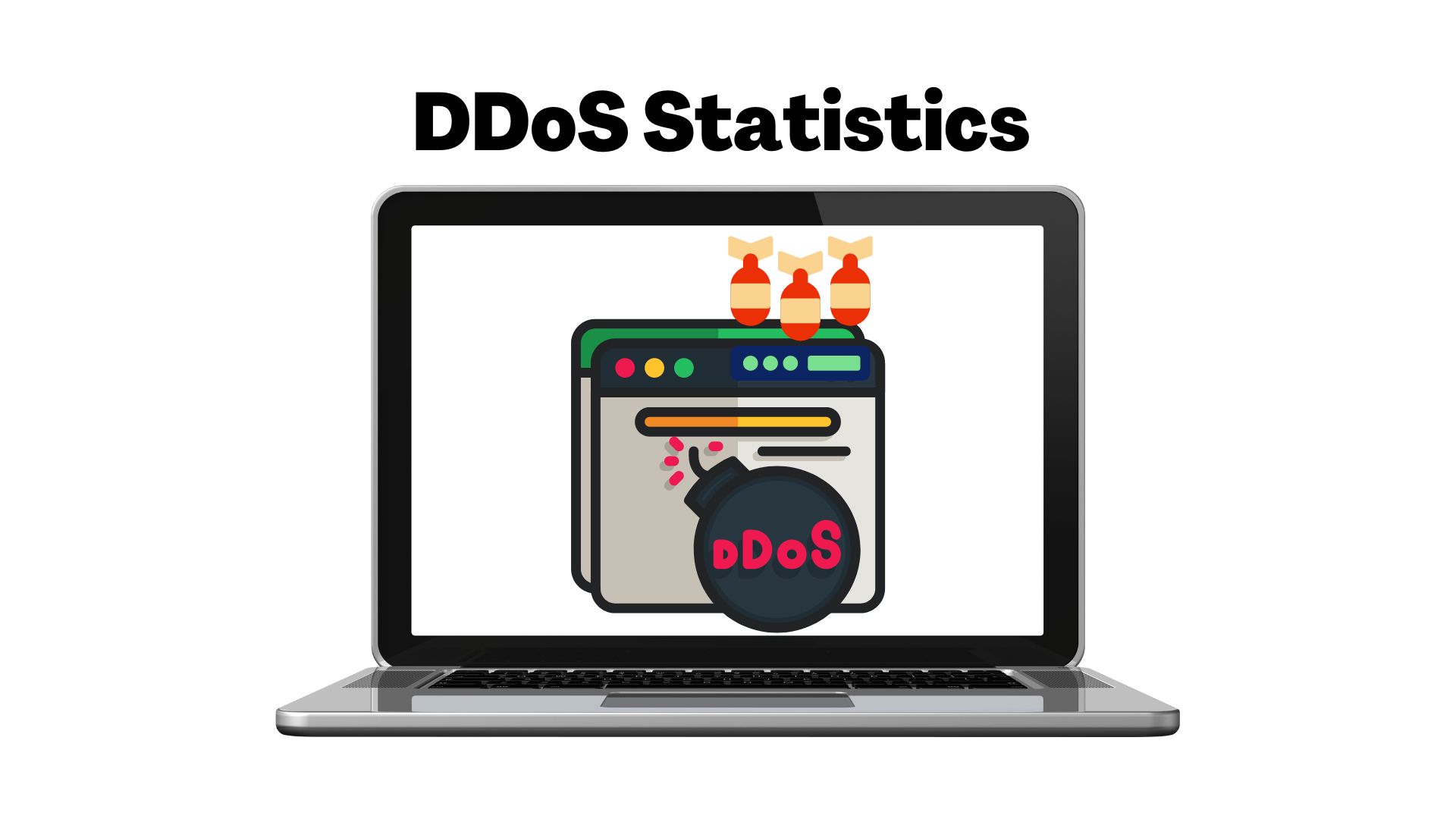30+ Networking Statistics 2022 That Will Amaze You!
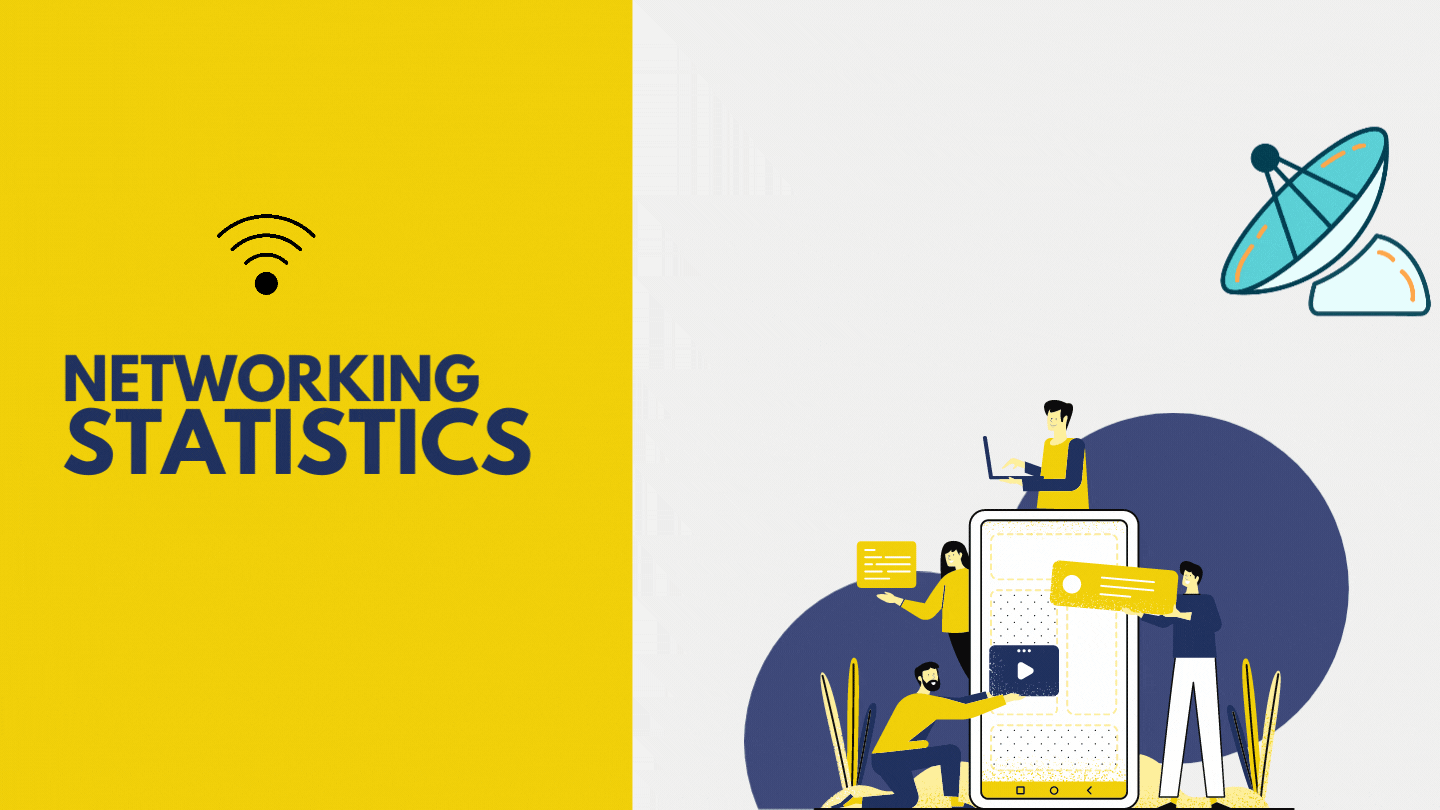
Page Contents
Networking Statistics: Networking is an essential part of doing business and advancing your career. Even after learning how critical networking is to ensuring success, many professionals remain dubious or hesitant to network.
There are chances that you have taken part in face-to-face networking whether you are working for a company with client-facing roles or self-employed. After all, this is the best way to build new connections.
But is it the only way that works?
Networking statistics show that sites such as LinkedIn, Facebook, Instagram, etc., are highly effective, particularly for people who are more comfortable with networking online. In addition, networking is not just about making business connections. You can use it to search for a job.
Are you curious to learn more about networking statistics? Then please continue reading!
The statistics in this article will convince you that networking is vital for your business growth and career.
You will understand why networking is vital for building and maintaining a career by the end of this article.
Fascinating Networking Statistics
These are some fascinating statistics and networking facts to be aware of:
- 95% of respondents agree that face-to-face meetings are better for building business relationships.
- Human resource (HR) managers anticipate that face-to-face meetings can resume by the end of 2021.
- 81% of survey respondents intend to have a face-to-face meeting before the end of 2021.
- 72% of the individuals in their network claim that handshakes and looks influence them.
- According to 69% of scientists, the most significant drawback of online meetings is “poor networking opportunities.”
- 80% of professionals think that their career goals can be achieved via professional networking.
- 69% of people prefer to meet new customers or clients face-to-face rather than virtual.
- Approximately 93% of Millennials have a smartphone, compared to 68% of Baby Boomers.
- The networking alone is responsible for filling up to 85% of all jobs.
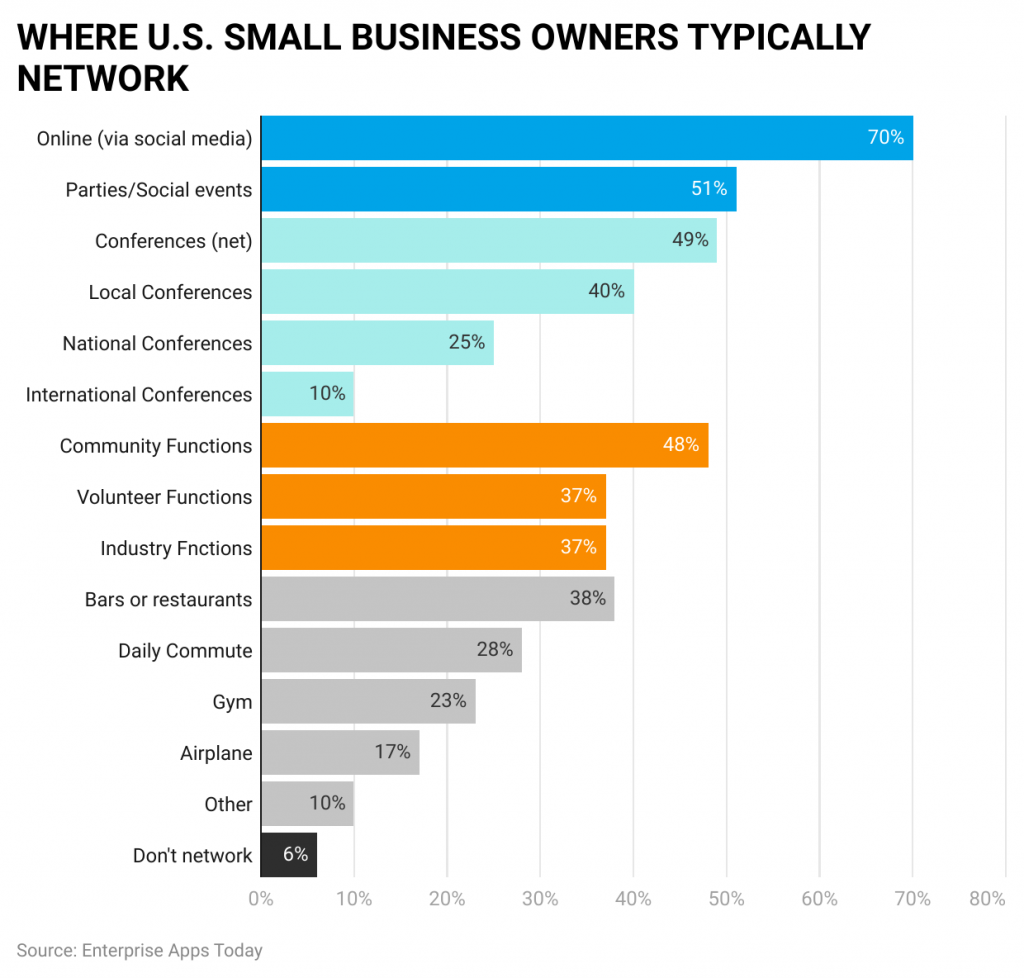
General Networking Statistics
Statistics from the networking state indicate that people prefer to meet face-to-face rather than online. Why is that so?
#1. 95% of individuals agree that face-to-face meetings are better for building business relationships.
According to networking statistics, nearly $12.50 can be generated for every dollar spent on business travel by a company. These numbers make it easy to understand why so many businesses invest so heavily in international travel- meeting face-to-face with clients and colleagues means making better work relationships.
(Source: FinancesOnline)
#2. Many people across the globe are unwilling to give up the handshake post-COVID-19 pandemic.
We love to shake hands, whether after securing a deal or saying hello to someone we care about or a stranger. Unfortunately, things have been quite challenging due to the pandemic.
Handshakes have been common since the 5th century, according to networking facts. They represented peace amongst Greeks since they used it to sign that they were not carrying weapons.
Even though many US states have eased restrictions, the handshake's future remains uncertain. Some people believe that we should eliminate it from the health context. However, most people believe that handshakes are a stress relief method.
(Source: BBC)
#3. Nearly 46% of shoppers prefer in-person shopping to online.
Around 33% of consumers prefer in-person shopping as they like to touch, interact, and view physical items. In addition, 13% of shoppers consider store shopping convenient.
#4. Approximately 70% of scientists believe that digital conferences will not offer enough networking opportunities in 2021.
In 2020, virtual meetings were very popular because they allowed people to carry on business without being restricted. It wasn't long before people realized they had a significant limitation: their inability to network and collaborate with colleagues.
According to statistics on effective communication, around 7 out of 10 participants believe that online meetings lack adequate human interaction for proper networking.
They're not wrong to believe this.
According to research, nearly 97% of participants prefer meeting in-person with less than 10 persons. The most important reasons to choose smaller events are team collaboration, better group discussions, and more interactions.
Conference organizers have therefore planned to combine face-to-face and virtual meetings to maximize the benefits of both.
(Source: Nature)
Face-to-Face Networking Stats 2022
Despite the fact that more people work from home, technology seems insufficient. This is at least what face-to-face networking statistics indicate.
#5. Human resource experts anticipate that in-person meetings can resume by Q4 of 2021.
Approximately 30% of CHROs (Chief Human Resource officers) in Canada and the United States expected face-to-face networking to resume within 6 to 12 months. Around 19% of people believed that it would take at least one year before face-to-face events would continue.
(Source: Meetings Net)
#6. More than 60% of people intend to embrace digital communications in 2021.
According to communication statistics, more than 63% of survey respondents expect online communication to be more important in 2021. Approximately ¾ of them believe that online communication has helped them make meaningful connections.
(Source: Deloitte)
#7. While speaking with the client, nearly 55% of all communication depends on body language.
These include several things such as eye contact, facial expressions, personal space, posture, etc. Overall, 55% is visual communication, 38% is vocal communication, and only 7% is verbal communication.
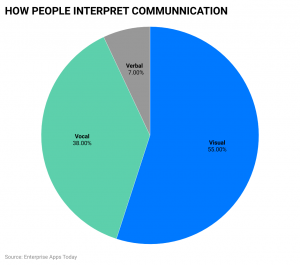
#8. Eye contact can be a powerful way to show interest in a conversation. So, it is best to maintain eye contact nearly 70% of the time when listening and around 50% of the time while speaking.
Eye contact is an effective way to show that you are interested in having a conversation. It's important to establish eye contact immediately and adhere to the 50/70 rule. Eye contact should be limited to a minimum of four to five seconds.
#9. You can start your networking journey by taking part in leisure activities.
It is all about common interests. Here are some great places to network: Coffee shops, alumni events, hobby clubs, retreats, online forums, classes, job fairs, and cultural events.
#10. Around 74% of survey respondents would like scientific research meetings online, even after the coronavirus pandemic.
According to networking stats, approximately ¾ of researchers desire virtual meetings to become the norm after the coronavirus pandemic, despite having numerous webinars and “Zoom fatigue.” The main reason is the ability to attend webinars and conferences from anywhere around the globe.
More than 70% of the over 900 scientists who participated in the survey stated that they had attended more meetings than ever before. Here are some of the things the contributors indicated they liked about cyber conventions:
- Cost effectiveness-19%
- Zero carbon gas emission- 21%
- Easier accessibility-49%
(Source: Nature)
#11. 40% of individuals claim that they have more successful networking online than meeting face-to-face.
While online networking can be helpful, face-to-face networking is more effective. The most popular places for networking are events, professional associations, festivals, conferences, etc.
(Source: Fit Small Business)
Business Networking Stats in 2022
One-on-one meetings can be the most effective method to meet new customers. But, traditional methods like handing out business cards are ineffective and outdated. Take a look at these statistics:
# 12. Business owners need to hand out at least 2000 business cards before seeing a 2.5% increase in sales.
Statistics on business networking show that the majority of people will throw away their business cards within their first week. This is likely because many people don't intend to use the business' products or services. The digital business card is a better choice than the paper one. They are cost-effective! They're also much more beneficial for the environment.
(Source: CreditDonkey)
#13. More than 3/4 of meeting planners intend to host their first in-person meeting after the pandemic in 2021.
Most businesses worldwide used virtual meeting software such as GoToMeeting, FaceTime, and Zoom to meet with their clients during the pandemic. Following the vaccination rollouts, companies slowly return to traditional meeting methods as most countries reopen.
Face-to-face networking stats for 2021 show that more than 80% of professionals plan to meet in person by the end of 2021. Around 60% of people will do it in Q2 of 2021, and 19% of people hope to have their next meetup in 2022.
(Source: Northstar Meeting Group)
#14. When in-person meetings are held, 40% of prospects turn into customers.
According to a study done in the United Kingdom and Oxford, in-person meetings can increase sales conversions. In addition, according to meeting stats, up to 40% of prospects are converted to customers when they meet in person, compared with 16% who don't attend an in-person session.
(Source: Fit Small Business)
Job Networking Statistics
These professional networking statistics demonstrate that networking is an essential tool in finding a job.
#15. The networking alone is responsible for filling up to 85% of all jobs.
According to current statistics on job search, networking is a better way for job seekers to find work. As a matter of fact, nearly 70 to 80% of all jobs are not advertised. This means that many individuals could miss out on incredible opportunities because they spend as much as 80% of their time surfing the internet looking for jobs.
(Source: FinancesOnline)
#16. Professional networking can help you to improve your career, according to 79% of professionals.
The same group believes that not only networking is essential for their current career success, but it's also essential for their future career growth. According to professional networking stats, only half of those surveyed worldwide say they maintain contact with their network.
Despite this, just 48% of professionals claim they stay in touch with their friends and family because of the lack of time and other factors.
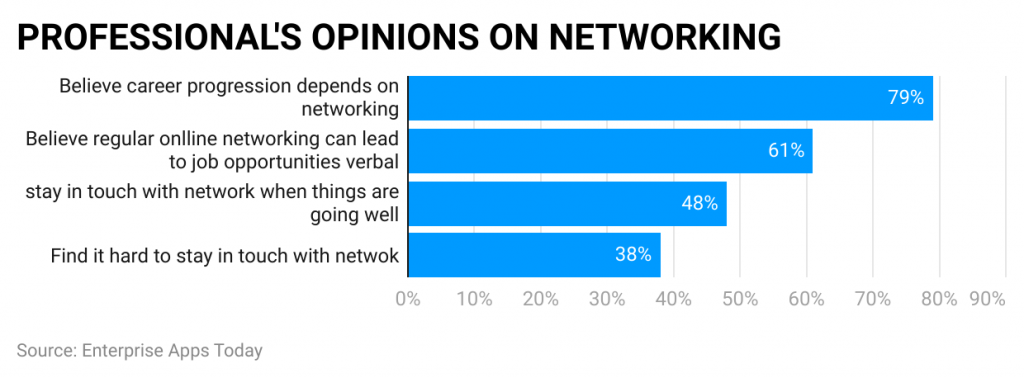
(Source: LinkedIn Newsroom)
#17. Networking helped at least 70% of people to get their current jobs.
Have you ever wondered how many jobs can be found through networking?
Answer: At least 70%. According to networking statistics, this makes it one of the most effective methods to find a job.
(Source: PayScale)
#18. Networking is responsible for 78% of startup's success.
Entrepreneurs know the importance of networking, and online networking is ubiquitous among several businesses globally. Linkedin is a social networking site used by 57% of entrepreneurs, and the Facebook site is operated by 37% of businesspersons in the United States.
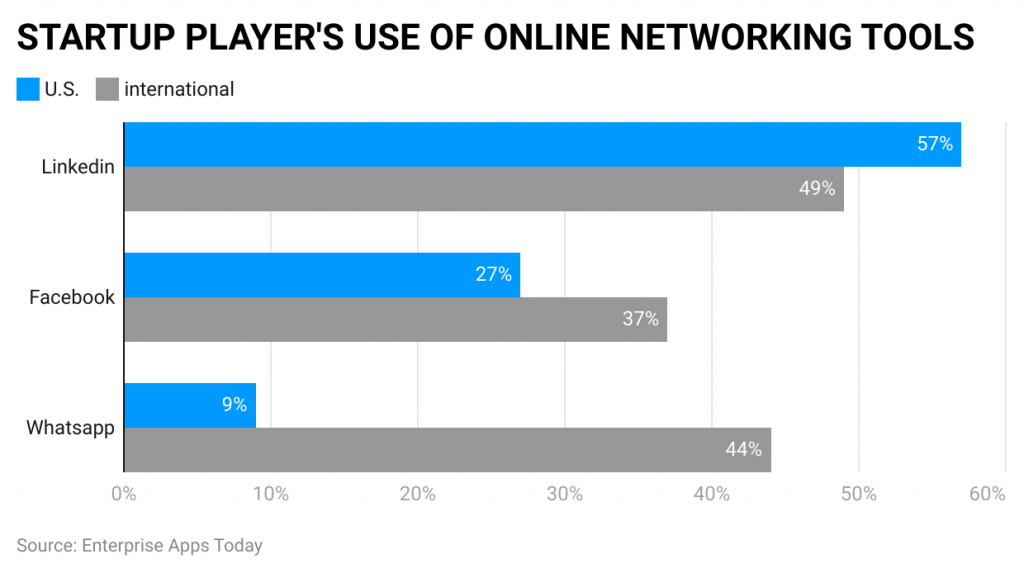
Networking Sources in 2022
If you don't like face-to-face meetings, there are various social media platforms to help. This is no surprise, considering how much time we spend on social networking. The following social media statistics support this.
#19. As of 2021, there are approximately 1 billion Instagrammers.
Instagram has been a popular platform for businesses that want to reach a broad audience over the years. According to statistics on networking, Instagram's social networking service has nearly 1,074 billion global users as of 2021. They spend almost an hour per day browsing the web and then posting.
(Source: Oberlo)
#20. 200 million small- and medium-sized businesses have already started using Facebook in 2021.
Social networking stats show that 200 small and medium-sized businesses use Facebook pages. This tool allows establishments to connect with large communities across different geographical areas. They can also post their location and contact information on Facebook, so the tool is so popular.
(Source: Oberlo)
#21. LinkedIn has 700 million users as of 2021.
According to networking statistics for 2021, nearly 40% of LinkedIn subscribers use it every day. This means that there are billions of interactions each month. In addition, users log in to LinkedIn social networking sites for just 17 minutes, so it is vital to make an excellent first impression in order to get their attention.
(Source: Kinsta)
Virtual Networking Statistics
Many workers were forced or chose to work remotely due to the COVID-19 epidemic. Working remotely can affect your ability to network. Here are our findings:
#22. 49% of professionals report that the main benefit of online networking is its “easier access.”
Approximately 70% of respondents agreed that online networking enabled them to attend more meetings. This is in addition to another benefit employees pointed out, where 19% of people stated that online networking was cost-effective.
#23. In the US, nearly 61% of staff prefer remote group meetings.
Virtual meetings are preferred by 61% of employees for large group meetings compared to 31% who do not. These numbers are even higher for small group project meetings, where 51% of employees prefer virtual meetings and 49% of staff prefer in-person meetings.
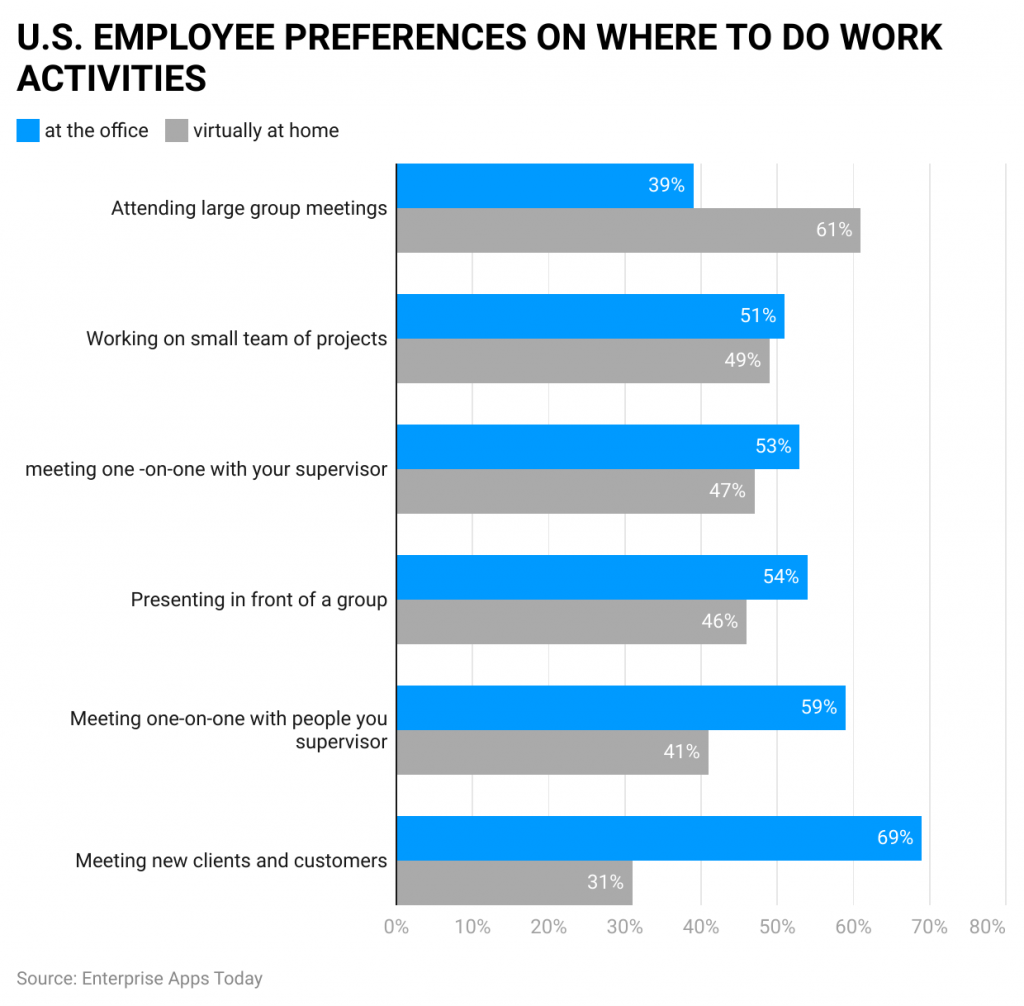
#24. 69% of people prefer to meet new customers or clients face-to-face rather than virtual.
This is the activity that employees are most comfortable discussing among all work-related activities. In addition, meeting the colleague you supervise is the second most preferred in-person activity, with 59% of people agreeing that it is better to meet your supervisor in-person than via virtual meetings.
#25. 40% percent of individuals claim that they have more success networking online than meeting face-to-face.
Although in-person networking is 24% more effective than online networking, almost half of all businesses prefer to network online.
Preferences for Employee Workplace Activities: In-Office or Virtual
Would you prefer to undertake each of the following work activities face-to-face at your business or virtually from home if you had to choose?
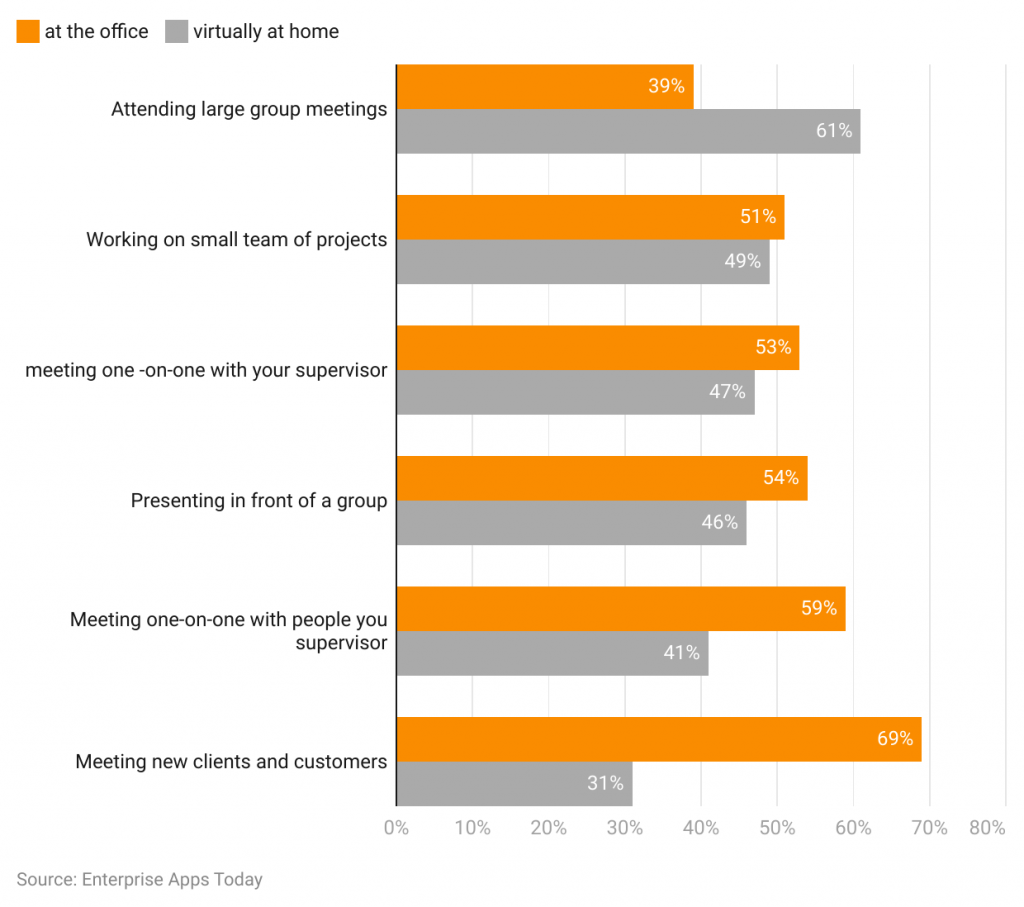
Networking Statistics and Trends
According to statistics on small business networking, bars, airplanes, and restaurants are the most common places for networking. As co-working spaces grow and Google translate improves, things will likely change. Soon people will have the ability to network from anywhere in the world.
#26. Google Translate is used by more than 500 million individuals every day.
Google Company has been improving the translation service since 2006, and more than 100 million words are currently being translated daily using the service. Its popularity among business people is projected to skyrocket in the future, enhancing the value and effectiveness of networking for professionals worldwide.
(Source: Google)
#27. According to statistics on networking importance, 38% of professionals say that restaurants and bars are the best places for networking.
According to statistics regarding networking importance, apart from restaurants and bars, gyms were the second most popular places, followed closely by airplanes. This proves that networking is possible anywhere.
Other common networking spots include the gym (23%), daily commute (28%), and airline (17%). There are many opportunities for networking in our daily lives.
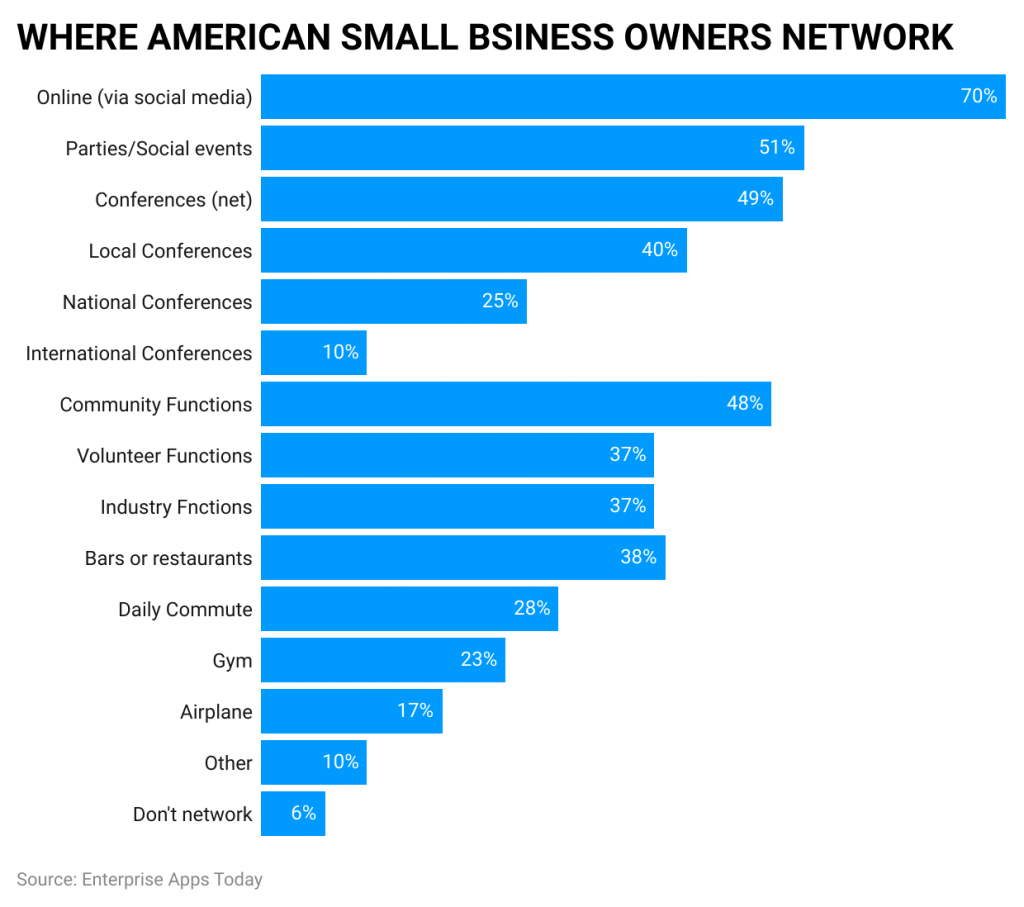
#28. More than 65% of tech companies will have event bookings in 2021.
According to networking stats, more than 60% of companies have made reservations for 2021. Nearly 25% of event planners stated that they do not have any prior bookings.
This is an increase of 11% over the third week of December 2020.
(Source: BTN)
#29. According to recent data, the most engaging emails are sent between 9 to 11 a.m.
53% of people are reading networking emails during this period, with a peak at 10 a.m.
#30. Nearly 93% of Millennials have a smartphone, compared to 68% of Baby Boomers.
According to a recent analysis, Millenials have more tablets, laptops, and smartphones than previous generations. They use social media and the internet frequently, implying that online networking is more beneficial for them. For example, nearly 37% of entrepreneurs use Facebook. However, just 60% of Baby Boomers use Facebook, compared with 84% of Millennials.
#31. Based on network statistics, there were more than 26,000 co-working spaces worldwide in 2020.
Nearly 70% of Millennials do not believe that going to the office is necessary. This statement is supported by networking statistics for 2021. Approximately 83% of employees work remotely, at least part of the day. This is why WeWork and other companies are making billions.
(Source: Medium)
Networking Stats by Demographics
Are you interested in learning more about networking and strong networking demographics? These are the specific statistics on who, when, and where to network with.
#32. Referrals from co-workers account for nearly 40% of all hiring.
Despite the fact that employee referrals account for only 7% of all applicants, they account for 40% of all hiring. Given that 62% of interviews come through job boards and other recruitment websites.
Conclusion
The business world and the job marketplace are dependent on networking. Many individuals find a job through networking. Many business leads and sales opportunities are made possible by networking. Overall it is a great way to improve your skills, discover job opportunities, and stay up-to-date in your industry.
You may believe that online networking has replaced face-to-face networking because many people worldwide work remotely. But technology is not replacing old, good, and healthy face-to-face interaction. According to networking statistics, face-to-face interactions are still the most effective approach to acquiring new consumers.
Overall, the future looks bright for networking. The rise of co-working spaces all over the world and advancements in Google Translate means that we will soon be capable of connecting with the network almost anywhere.
Hopefully, this article should have clarified why networking is essential for your business development, job search, career, and personal growth.
Sources
FAQ.
Networking is the best way to find job opportunities and stay up to date with industry news and industry news. It means that a strong network can increase your chances of finding various career opportunities. Approximately 85% of jobs are filled via networking rather than traditional job boards.
To ensure your networking efforts are successful, make sure you are intentional and careful about the contacts you develop, especially if you are just started. It would be best if you always considered what you could offer others rather than focusing on the benefits you get from networking.
You can improve your network by getting engaged in your community, going to social events, asking questions, complimenting people, using social media, finding common interests, following up after meetings, keeping track of who you meet, and making yourself a resource for others to improve your network.
You are not alone if you want to expand your network. Just 48% of people say that they maintain contact with their network, while 38% of individuals believe it is difficult.
It is important to meet up in person when you can, but online networking can also be effective. Both online networking and face-to-face networking have their benefits. Recent statistics indicate that online networking is 24% better for businesses to get new customers. This shouldn't be a reason to stop you from networking online.
More Americans work remotely after the COVID-19 pandemic. Recent trends show that younger generations mostly prefer to network online. If you are unsure, think about why you need to network. What kind of demographics are you looking for? This will help you decide if you require more in-person or online attention.
Networking can be difficult because most people are afraid of or disapprove of networking. It's easy to associate networking with aging business people in Las Vegas conference centers, but the truth is that professional networking isn't all that dissimilar from personal relationship-building.
The underlying idea is that networking is a technique of gaining an unfair benefit by "knowing the right people," which contradicts Americans' affection for and belief in meritocracy.
However, every industry has relied on interpersonal relationships for success since the dawn of time. Knowing people is part and parcel of building a career.
Moreover, networking is complex because it involves putting out your ideas, talking with new people, and engaging in thoughtful and respectful conversations with others' ideas. All of these things require different levels of energy and time, depending on your personality type.
You can make networking more accessible by not putting too much pressure on those relationships. Although it may take some time to change your mindset from being a burden to networking to one that is enjoyable and necessary, you can start to feel excited about meeting new people who share your goals and passions.

Barry is a lover of everything technology. Figuring out how the software works and creating content to shed more light on the value it offers users is his favorite pastime. When not evaluating apps or programs, he's busy trying out new healthy recipes, doing yoga, meditating, or taking nature walks with his little one.
